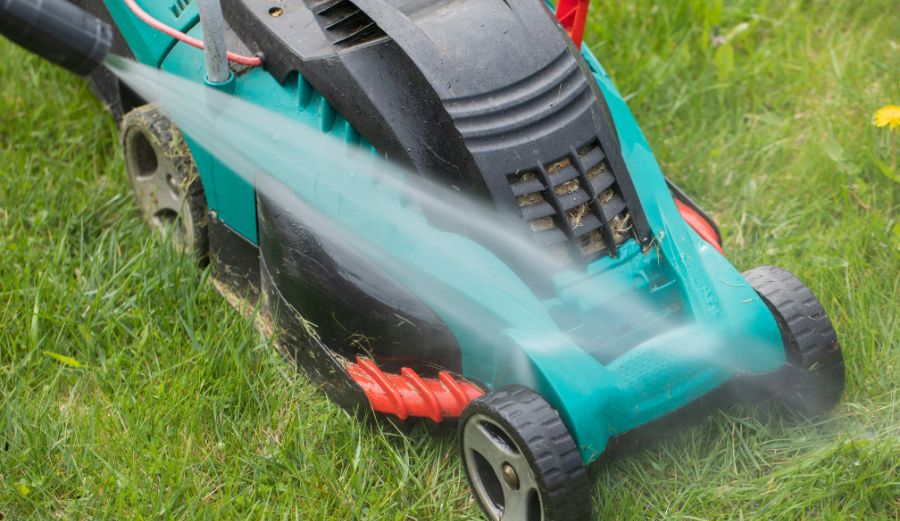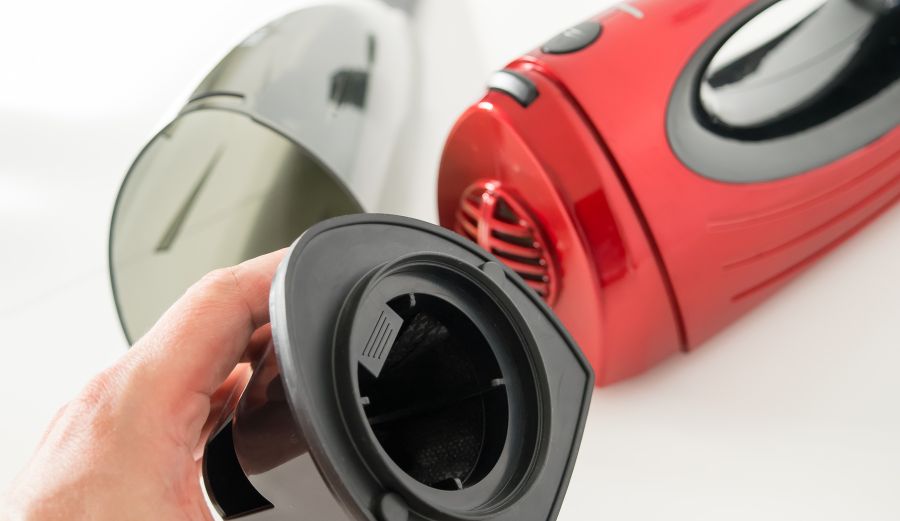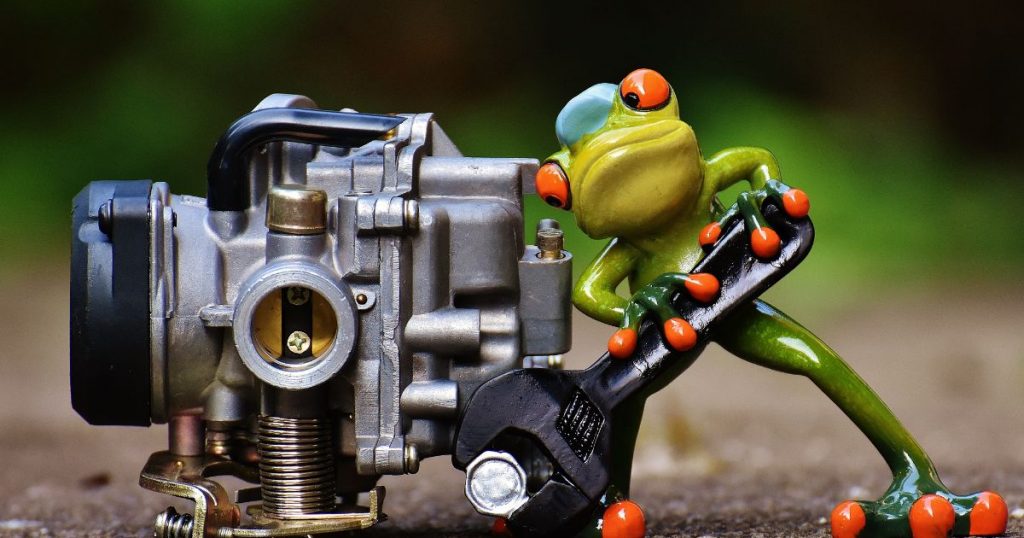
Revitalize your outdoor oasis with our comprehensive guide on How to Fix a Lawn Mower. From stubborn starts to mysterious malfunctions, we demystify the art of DIY mower repairs.
No need for a green thumb—just a willingness to explore the secrets of troubleshooting. Navigate through our expert tips and unlock the simplicity of getting your lawn mower running smoothly.
Say goodbye to frustrations and hello to a flourishing lawn. Let’s dive into How to Fix a Lawn Mower and quickly transform your gardening experience!
Unlocking Lawn Mower Longevity: The Art of Preventive Maintenance
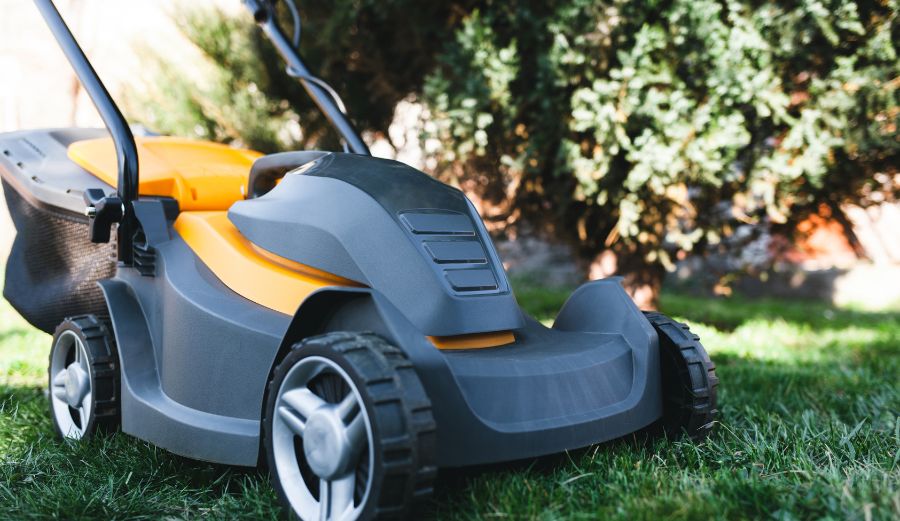
Your trusty lawn mower, the unsung hero of your green haven, deserves meticulous care to ensure it operates at its peak. Enter the realm of preventive maintenance, where a proactive approach can save you from the woes of unexpected breakdowns and keep your lawn mower running like a well-oiled machine.
Regular Inspection: A Watchful Eye on Wear and Tear
Embark on a routine inspection journey, scrutinizing your mower for subtle signs of wear and tear. Check the blades for sharpness, inspect the spark plug for any carbon buildup, and ensure optimal oil levels. This regular scrutiny not only enhances performance but also catches potential issues before they escalate.
Scheduled Servicing: The Silent Guardian of Mower Health
Adhering to a meticulous maintenance schedule is akin to appointing a silent guardian for your mower’s health. Regular servicing, including oil changes, air filter replacements, and belt inspections, can significantly extend your mower’s lifespan. The investment in time and minimal resources pays off in the form of a reliable and efficient lawn care companion.
Proper Storage: Shielding Your Mower During Hibernation
As the mowing season takes a pause, proper storage becomes the shield against common issues arising from neglect. Safeguard your mower from the elements by storing it in a dry and sheltered space. Take the extra step of draining fuel or using a fuel stabilizer to prevent carburetor issues. A well-stored mower emerges from hibernation ready for action, ensuring a seamless transition into the next mowing season.
Preventive maintenance transforms your lawn mower into a resilient and enduring ally. Regular inspections, scheduled servicing, and thoughtful storage collectively lay the foundation for a thriving and hassle-free mowing experience. Adopt these practices, and watch as your lawn mower becomes the champion of your green sanctuary, season after season.
Navigating Lawn Mower Woes: Troubleshooting Basics Unveiled
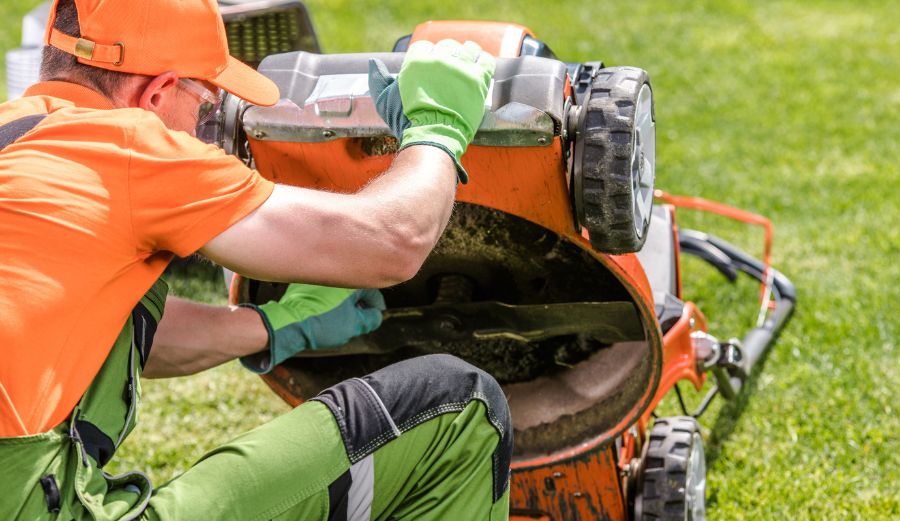
Embarking on the journey of troubleshooting your lawn mower demands a keen understanding of its intricacies. Delve into the basics, unraveling the mysteries of its essential components and functions, and equip yourself with the knowledge to identify and tackle common issues.
Understanding Your Lawn Mower: Decoding the Mechanical Symphony
Picture your lawn mower as a symphony of mechanical components working in harmony. This section provides an insightful overview of these components—the engine, carburetor, spark plug, blades, and more. Understanding their roles and interactions lays the groundwork for effective troubleshooting. From the fuel system to the intricate wiring, we demystify the heart of your lawn care arsenal.
Identifying Common Issues: A Troubleshooter’s Handbook
Armed with knowledge, we embark on a detailed exploration of the common issues that can plague your lawn mower. Dive into a comprehensive list, from starting problems and engine inefficiencies to blade-related issues and electrical glitches. Each situation is dissected, accompanied by clear indicators and potential causes. Consider this your troubleshooter’s handbook, guiding you through the labyrinth of mower maladies.
Navigating the basics of troubleshooting transforms you into a mower maestro capable of diagnosing and addressing issues confidently. By understanding the intricacies of your lawn mower and recognizing common problems, you take the first step towards a smoother, more efficient mowing experience. Let’s unravel the mysteries and empower you to be the master of your green domain.
Won't Start Issues: Reviving Your Mower's Engine
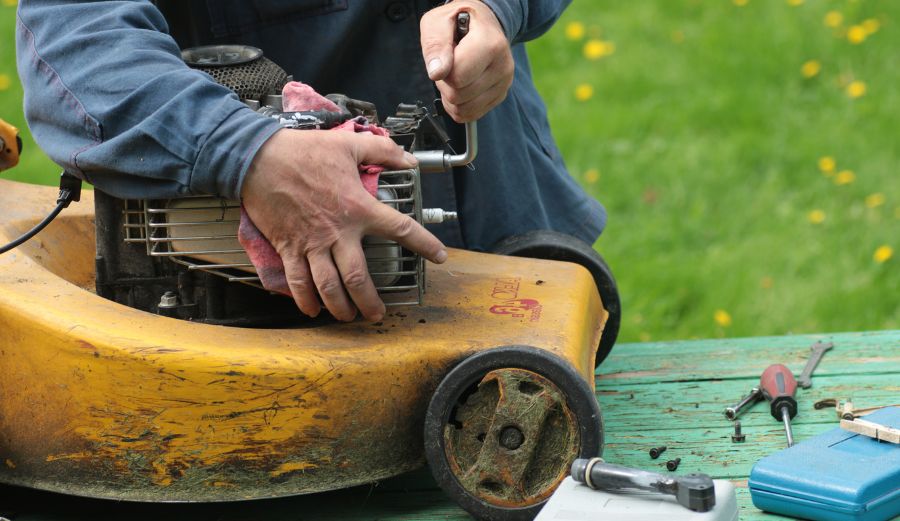
Checking the Spark Plug:
- Locate the spark plug near the engine—often visible with a wire attached.
- Gently disconnect the wire and, using a socket wrench, carefully remove the spark plug.
- Inspect the plug for signs of wear, carbon buildup, or damage.
- Replace it with a compatible spark plug per your mower’s specifications.
- Reconnect the wire snugly, ensuring a secure fit.
Pro Tip: A well-maintained spark plug is crucial for ignition and efficient combustion. Addressing issues promptly enhances your mower’s starting performance.
Examining the Carburetor:
- Identify the carburetor’s location, typically positioned near the air filter.
- Start by taking off the air filter housing to reach the carburetor.
- Inspect for visible signs of dirt, debris, or clogs in the carburetor components.
- Utilize carburetor cleaner or compressed air to meticulously clear any obstructions.
- If necessary, consult your owner’s manual for guidance on adjusting the carburetor settings.
Pro Tip: A well-functioning carburetor ensures the optimal air-fuel mixture, a critical factor for starting and overall engine performance.
Fuel System Inspection:
- Locate the fuel tank, often situated near the engine or under the mower body.
- Check for sediment or debris in the fuel tank, which can impede fuel flow.
- If applicable, examine the fuel filter for clogs or contaminants.
- Remove any stale fuel, replacing it with fresh, high-quality gasoline.
- Consider adding a fuel stabilizer to prevent fuel-related issues during periods of inactivity.
Pro Tip: A clean and efficient fuel system is the lifeblood of your mower’s engine, ensuring consistent starts and reliable operation.
Adopting a proactive approach to checking the spark plug, examining the carburetor, and maintaining a clean fuel system is the key to a responsive and dependable mower. Remember these practices to breathe new life into your mower’s engine and elevate your lawn care experience.
Engine Running Rough: Fine-Tuning for Optimal Performance
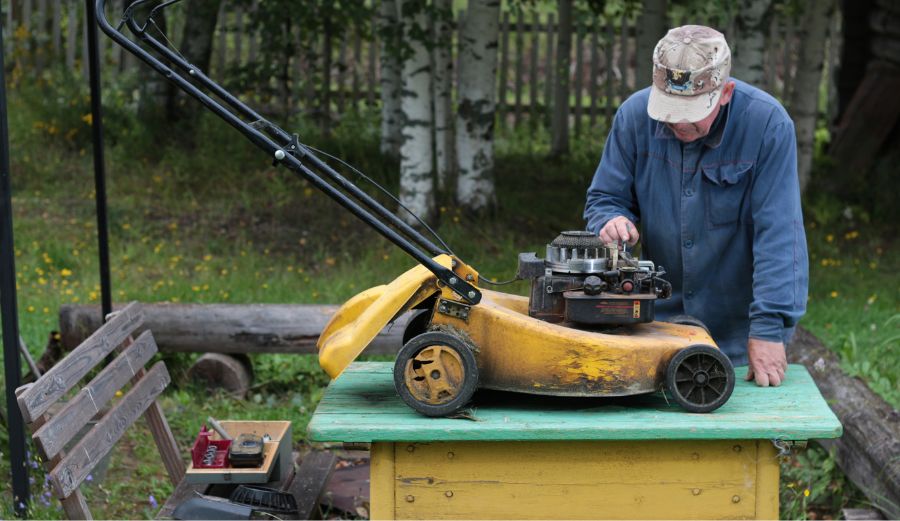
Air Filter Inspection:
- Begin by locating the air filter, typically housed near the engine.
- Carefully remove the air filter cover or housing to access the filter.
- Inspect the air filter for visible dirt, debris, or signs of clogging.
- If clogged, replace the air filter with a new, compatible one.
- Regularly clean or replace the air filter to ensure unrestricted airflow.
Pro Tip: A clean air filter is essential for optimal combustion and engine efficiency. Regular inspections and maintenance enhance overall performance.
Fuel Quality:
- Assess the fuel quality by checking for visible contaminants or discoloration.
- If using old or contaminated fuel, drain the tank completely.
- Dispose of the old fuel responsibly and replace it with fresh, high-quality gasoline.
- Consider using a fuel additive or stabilizer to prevent fuel deterioration during inactivity.
Pro Tip: The quality of fuel directly impacts engine operation. Optimal energy ensures smooth combustion and guards against rough engine performance.
Fine-tuning your mower’s engine involves thoroughly examining the air filter and fuel quality. Maintaining a clean air filter and using high-quality fuel ensures your engine operates smoothly, delivering the performance needed for a well-manicured lawn.
Uneven Cutting or Poor Performance: Precision in Lawn Care
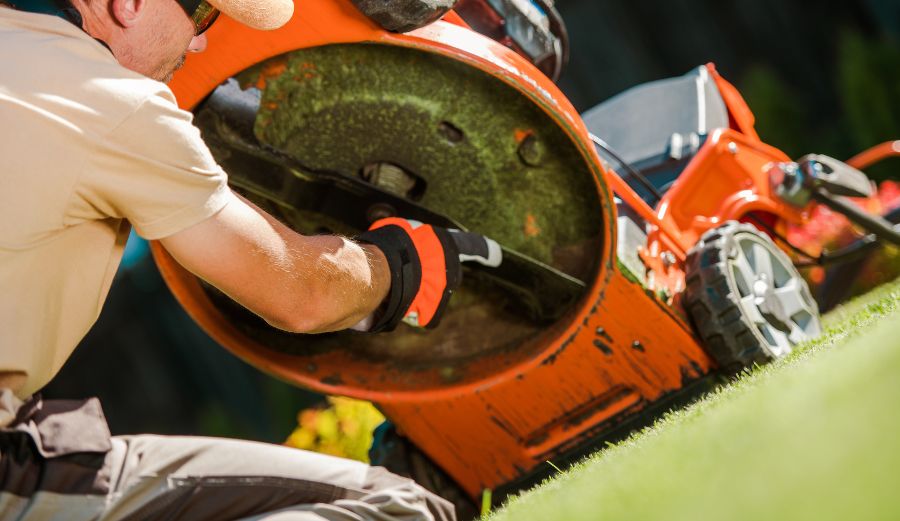
Blade Maintenance:
- Acknowledge the critical role of sharp blades in achieving a pristine cut.
- Frequently examine the mower blades for indications of wear, dullness, or any damage.
- Sharpen the blades using a file or grinder, maintaining a consistent edge.
- Ensure the blades are well-balanced; if not, address any imbalances.
- Prioritize routine blade maintenance to uphold cutting efficiency.
Pro Tip: Sharp blades guarantee a cleaner cut and reduce strain on the engine, contributing to overall mower longevity.
Leveling the Deck:
- Familiarize yourself with the mower deck adjustment mechanism.
- Park the mower on a flat, even surface for accurate adjustments.
- Adjust the deck height to achieve an even cutting size across the entire deck.
- Utilize a leveling tool to confirm the deck’s evenness from side to side.
- Regularly check and readjust the deck to accommodate terrain or ground conditions changes.
Pro Tip: A leveled mower deck ensures uniform cutting, preventing scalping and promoting an aesthetically pleasing, well-maintained lawn.
Attaining a flawless lawn requires meticulous attention to blade maintenance and deck leveling. By keeping your mower blades sharp and the deck adequately leveled, you not only enhance cutting precision but also contribute to your lawn’s overall health and appeal.
Strange Noises and Vibrations: Silencing the Symphony of Discontent
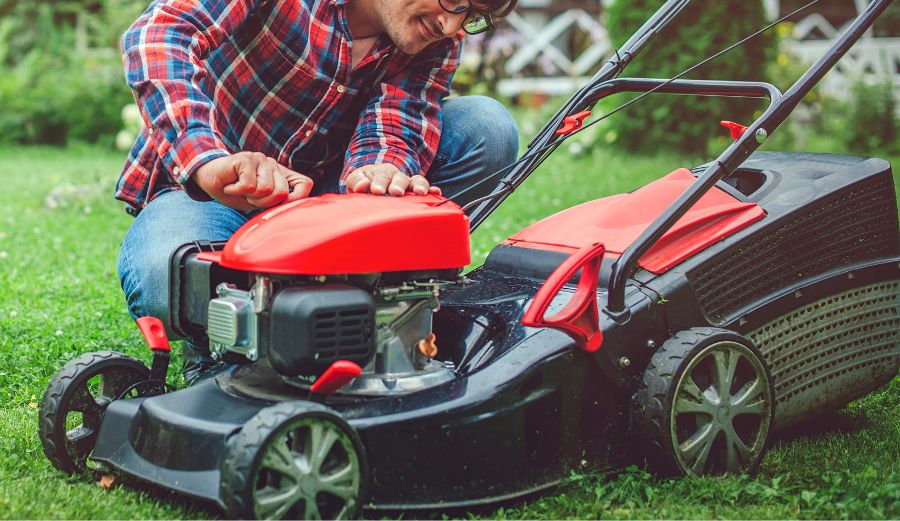
Loose or Damaged Belts:
- Begin by locating the belts near the engine and mower deck.
- Inspect the belts for visible signs of wear, fraying, or damage.
- Check for proper tension by pressing on the middle of the belt’s longest span.
- If loose or damaged, follow the manufacturer’s guidelines for belt replacement.
- Ensure the new belt is properly aligned and tensioned for optimal performance.
Pro Tip: Well-maintained belts reduce noise and contribute to efficient power transfer and overall mower performance.
Checking for Loose Parts:
- Conduct a thorough inspection of the mower for loose nuts, bolts, and various components.
- Pay attention to critical areas such as the engine, handlebars, and mower deck.
- Utilize the appropriate tools to tighten any loose fasteners securely.
- Inspect for signs of wear or damage on components, replacing as needed.
- Regularly perform these checks to prevent excessive vibrations and ensure a smooth operation.
Pro Tip: A stable and tightly assembled mower minimizes vibrations, enhances safety, and extends the lifespan of critical components.
Addressing strange noises and vibrations involves a systematic approach to belt maintenance and component checks. By identifying and replacing damaged or loose belts and ensuring all parts are securely fastened, you’ll create a harmonious mowing experience, free from disruptive sounds and unsettling vibrations.
Electric Lawn Mowers Troubleshooting: Powering Up Precision
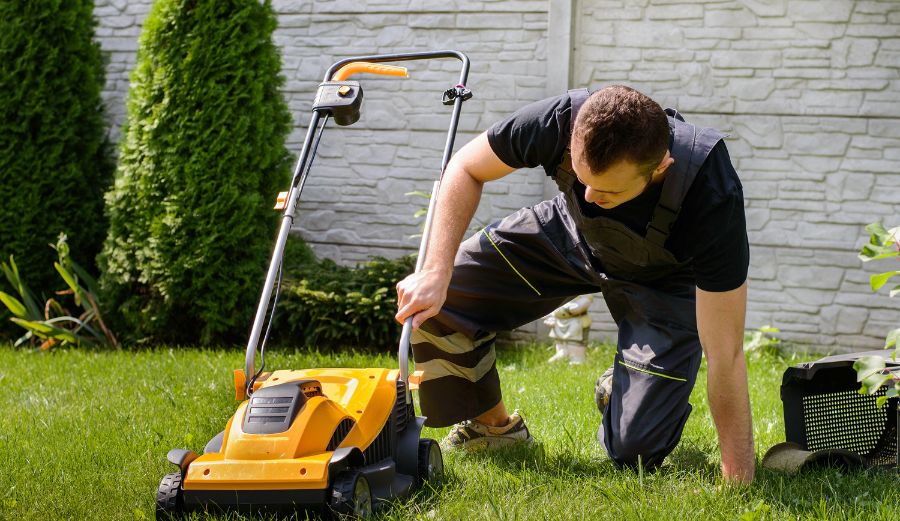
Battery Health:
Prioritize regular checks of the battery’s health for optimal performance.
- Inspect the battery for signs of corrosion, leaks, or physical damage.
- Clean the battery terminals with baking soda and water to prevent corrosion.
- Monitor the battery’s charge level and recharge before it depletes entirely.
- If the battery shows signs of deterioration, follow manufacturer guidelines for replacement.
Pro Tip: A well-maintained battery ensures consistent power delivery and extends the overall lifespan of your electric lawn mower.
Electrical Component Checks:
- Perform routine inspections of all electrical components, including wiring and connections.
- Check for loose or damaged wires, ensuring secure connections throughout.
- Inspect safety features such as the power switch and key for proper functionality.
- Utilize a multimeter to measure voltage and ensure electrical components are within specified ranges.
- If any electrical issues persist, consult the manufacturer’s troubleshooting guide or seek professional assistance.
Pro Tip: Regular electrical component checks enhance the safety and reliability of your electric lawn mower, contributing to uninterrupted performance.
Troubleshooting your electric lawn mower involves meticulous attention to battery health and electrical components. By maintaining a healthy battery and ensuring all electrical connections are secure and functional, you empower your electric mower for efficient and trouble-free operation.
Professional Help: Recognizing the Limits and Finding Solutions
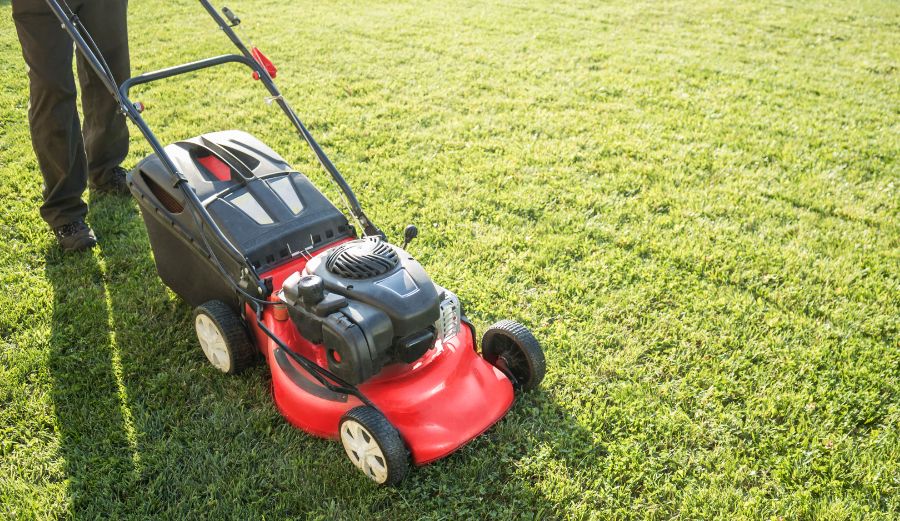
Signs Your Mower Needs Professional Attention:
If your attempts at DIY fixes leave your mower still struggling, sure signs indicate it’s time to call in a professional. Look out for persistent engine issues, unusual noises that defy diagnosis, or if the safety mechanisms refuse to cooperate. When faced with these challenges, seeking the expertise of a professional technician becomes imperative.
Choosing a Reliable Technician:
Finding the right technician can make all the difference in restoring your mower to its optimal condition. Opt for certified professionals with experience handling your specific mower brand and model. Seek recommendations from trusted sources, delve into customer reviews, and inquire about warranties covering their repair work. Choosing a reliable technician ensures a swift resolution to your mower woes. It safeguards the long-term performance of your valuable equipment.
Final Thoughts
Unlock the secrets to mastering how to fix a lawn mower — a journey from troubleshooting spark plug glitches to achieving precision in every mow. This guide reveals the art of proactive maintenance, ensuring your mower thrives. From adjusting belts to fuel system finesse, it’s a playbook for turning setbacks into victories.
Embrace these insights, let your mower shine, and elevate your lawn care game with each effortless stride. Your green sanctuary awaits, transformed by the expertise of fixing a lawn mower.
FAQs About Lawn Mower Repairs
Why won’t my lawn mower start?
Possible causes include a faulty spark plug, a clogged carburetor, or stale fuel. Inspect these components and replace or clean them as needed. If issues persist, consult your owner’s manual or seek professional help.
How do I troubleshoot a clogged air filter in my mower?
Remove the air filter cover, examine for dirt or debris, and clean or replace the filter accordingly. A clogged air filter restricts airflow, affecting engine performance.
What are the common signs of a faulty spark plug in a lawn mower?
Signs include difficulty starting, rough engine operation, or a lack of power. Inspect the spark plug for wear, carbon buildup, or damage, and replace if necessary.
How often should I sharpen the blades on my lawn mower?
Sharpen mower blades at least once a season or more frequently if you notice reduced cutting efficiency. Sharp edges ensure a clean cut and promote overall mower health.
What type of oil should I use for my specific lawn mower model?
Consult your owner’s manual for the recommended oil type and viscosity. Optimal engine performance and longevity hinge on the precise selection of the correct oil.
How do I adjust the mower deck for an even cut?
Park the mower on a flat surface, adjust the deck height according to your desired grass length, and ensure the deck levels from side to side. Regular adjustments prevent scalping.
What are the signs that my lawn mower needs professional repairs?
Persistent engine problems, unusual noises, or safety mechanisms failing may indicate the need for professional attention. If DIY fixes prove insufficient, consult a qualified technician for thorough diagnostics and repairs.
